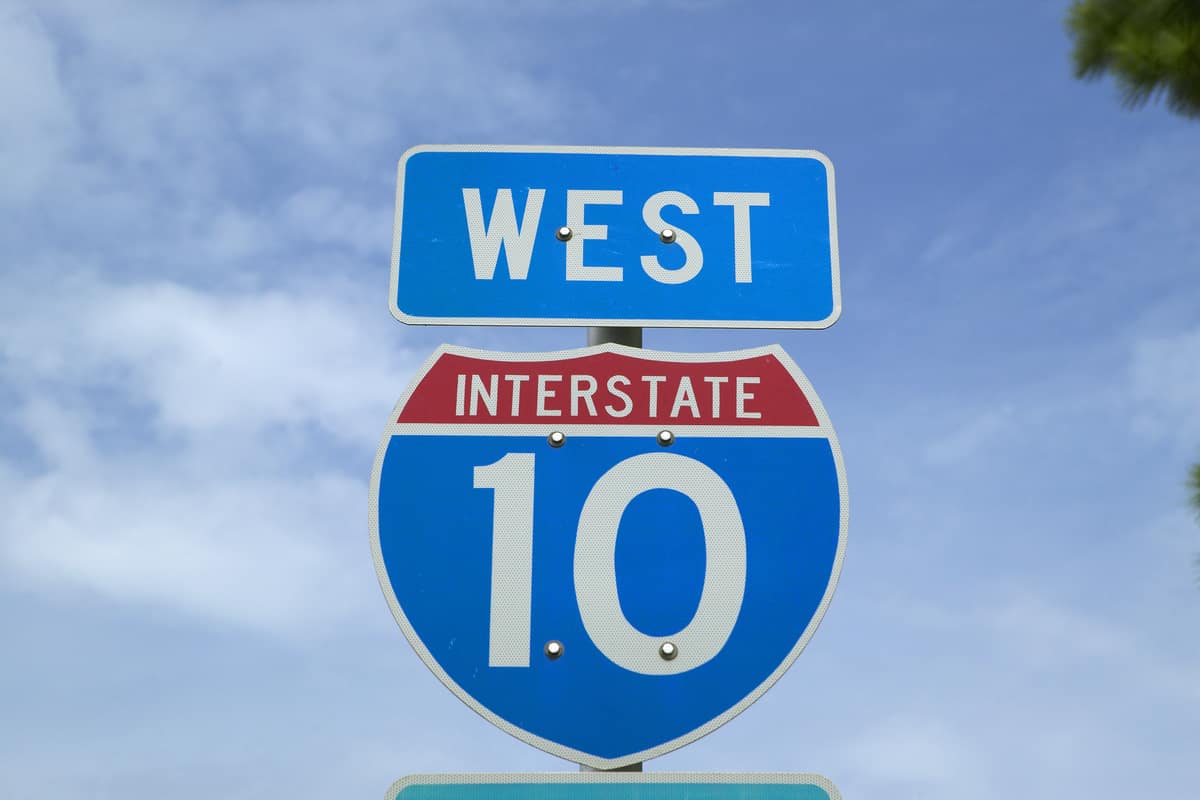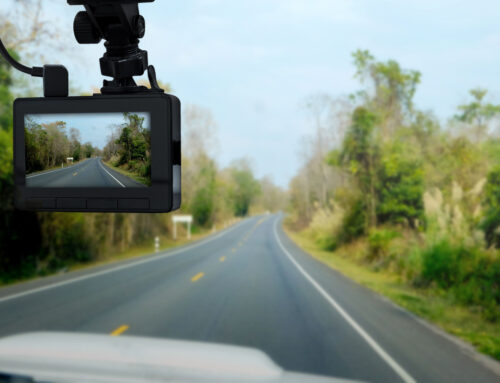The coronavirus (COVID-19) pandemic certainly curbed our travel plans significantly throughout the spring of 2020; but, with summer beach-goers and now fall foliage seekers coming down the road, there’s no question that people will again be on the move throughout the US. Many of those travelers will certainly travel at least part of the way using the coast-to-coast interstate highway system. That means I-10, ranked among the most dangerous highways in America, could see some impacts. Here’s some of what we think you’ll want to keep in mind.
Where I-10 Runs
Interstate 10 (I-10) is a transcontinental highway that runs from Santa Monica in Southern California through the deserts of the Southwestern United States, through Texas and ends in Jacksonville, Florida in the Southeastern United States. It is officially known as the Christopher Columbus Transcontinental Highway but it is popularly just known as I-10. I-10 is one of only three transcontinental highways in the US. The other two are I-80 and I-90.
In Texas, I-10 has an 80 mph (128.75 km/h) speed limit and swells to 16 lanes in the suburbs of Houston. When I-10 enters Louisiana, portions of the highway become elevated, including the portion that runs through Baton Rouge and along Lake Pontchartrain. Then it loops around Greater New Orleans and then passes into Mississippi and then Alabama and finally to Jacksonville, Florida.
The crowded highways and high-speed driving make excellent conditions for many traffic accidents. Add to that the lightless road conditions through much of that expanse of the highway and you can understand what makes driving on I-10 so dangerous.
The length of I-10 is impressive
I-10 is 2,460.34 miles (3,959.53 km) long and runs through 8 states from coast to coast. The largest stretch in one state is in Texas where it covers 879 miles (1,414.61 km). In Louisiana, the road covers 279 miles (449.01 km). That can mean a lot of tired drivers making long drives, solitary or otherwise, through various road conditions and topography. It is not hard to understand why I-10 is dangerous.
I-10 earned its deadly reputation
I-10 may rank as number four of the five deadliest roads in the country but the stretch through New Orleans is the deadliest of all at 2,460 miles (3,958.99 km). As of October 2019, I-10 had 54.5 fatal accidents for every 100 miles (160.93 km) of road. The New Orleans stretch alone had 89 fatal accidents earning it the dubious distinction as the deadliest city on the stretch. Based on the five years of accident data covered by the report from 2011-2015, I-10 piled up 1,342 fatal accidents in five years.
According to the National Highway Traffic Safety Administration (NHTSA), I-10 is also one of the deadliest highways for holiday travel in America. NHTSA statistics show that the deadliest parts of the highway are in Jefferson and East Baton Rouge parishes. And about one out of every three fatal crashes during the holidays involves at least one drunk driver.
A study by the SaferAmerica Consumer Safety Information, based on data from 2015-2017, found that Louisiana roads accumulated 2,098 fatal crashes — and those fatal crashes killed 2,269 people. The same study also showed that I-10 had the greatest number of fatal crashes (121) in the study period and the greatest number of fatalities (136). The I-10 also had the greatest number of fatal accidents caused by drunk drivers (39).
The SaferAmerica study linked these unbelievably high numbers to the following facts:
- I-10 is the highest traveled route between Louisiana’s four biggest cities: Lake Charles, Lafayette, Baton Rouge, and New Orleans.
- I-10 is the longest interstate in Louisiana crossing 275 miles from the Texas border to Mississippi.
- I-10 is also a mixed-use road that is a major thoroughfare for truckers, vacationers, and everyone traveling cross-country in a motor vehicle.
I-10: one of the darkest US highways
It is no secret that darkness plays a big part in causing vehicular accidents. I-10 earned its reputation as the second darkest highway in the US. For every 100 miles covered by I-10, there were 19.2 fatal accidents and a total of 472 fatal accidents occurring in the dark.
Police also shared their observations that many of the accidents in the New Orleans area are due to distracted or impaired drivers. People talking on cell phones and just being in a hurry. Many of the bridges in the area have little shoulder and so officers have been hit trying to help drivers in accidents.
I-10 and drunk drivers
I-10 is ranked fourth of US highways with fatal drunk driving accidents. I-10 has 12.6 fatal accidents for every 100 miles (160.93 km) and a total of 310 fatal accidents with a drunk driver.
Historical Information on I-10
The I-10 Twin Span Bridge was built in 1965 and functioned as a vital transportation link in the New Orleans region. In August 2005, I-10 made national news when Hurricane Katrina hit the Twin Span Bridge that connects Lake Pontchartrain with New Orleans. Katrina lifted sections of the bridge off its supports and dumped them into Lake Pontchartrain. Although temporary repairs were made to the bridge within two months of Katrina’s attack, Louisiana’s Department of Transportation and Development determined that the bridge was too fragile to withstand future hurricane storm surges. A new Twin Span Bridge was built to the cost of more than $700 million and fully opened to commercial and non-commercial traffic in 2011. The new bridge has two 60-foot wide travel spans and each span has three 12-foot lanes and 12-foot shoulders.
If you would like to read more about the severity of accidents that happen on I-10 in New Orleans, you may find interesting the June 2020 article from wwltv.com entitled “Two Killed, Four Injured When Three Cars Crashed Into Concrete I-10 Service Road Barrier in New Orleans East..”
If you’d like to talk to someone about all this topic while it’s still summer, contact us. We look forward to being your resource for all your personal injury questions.








